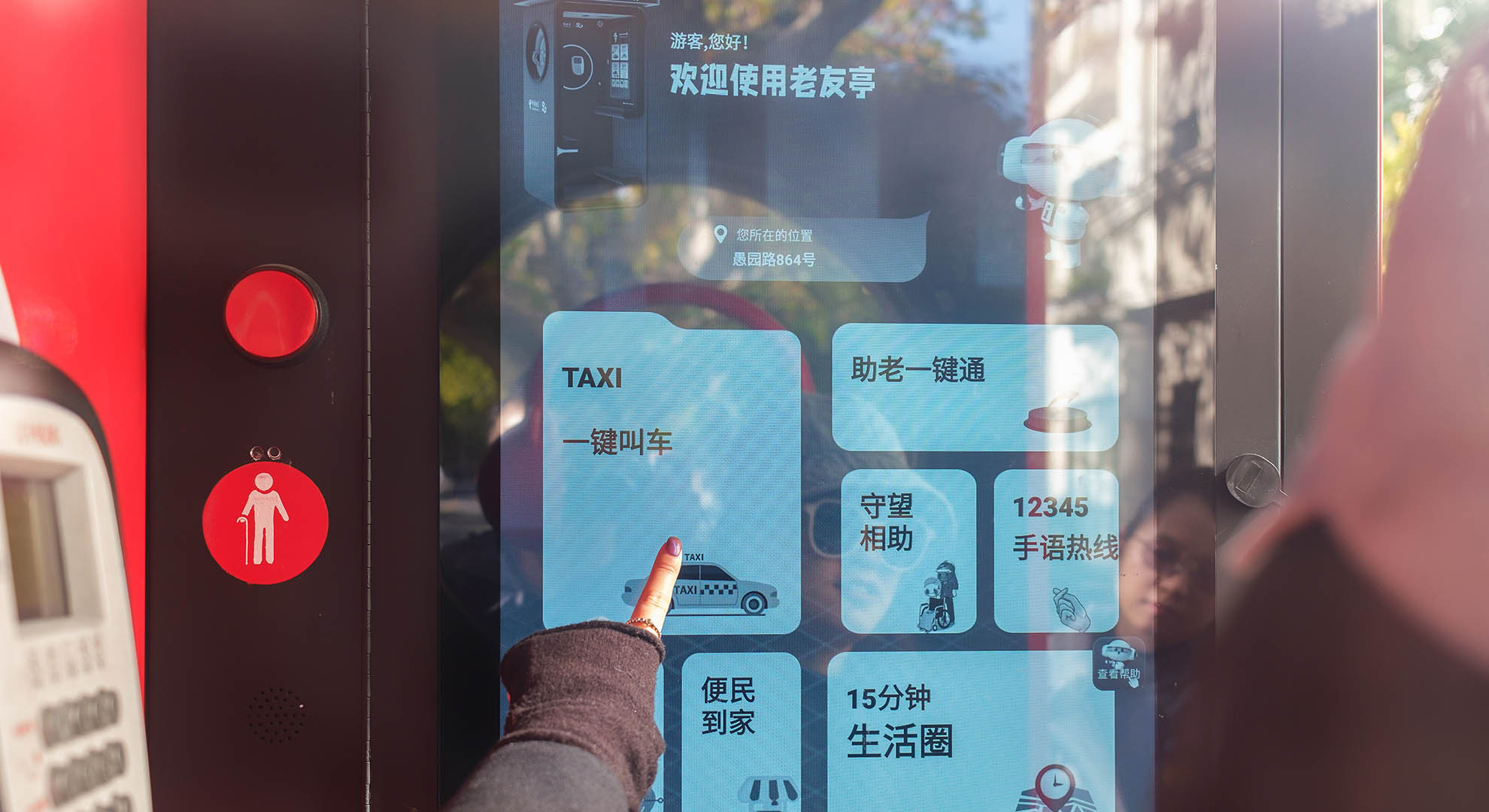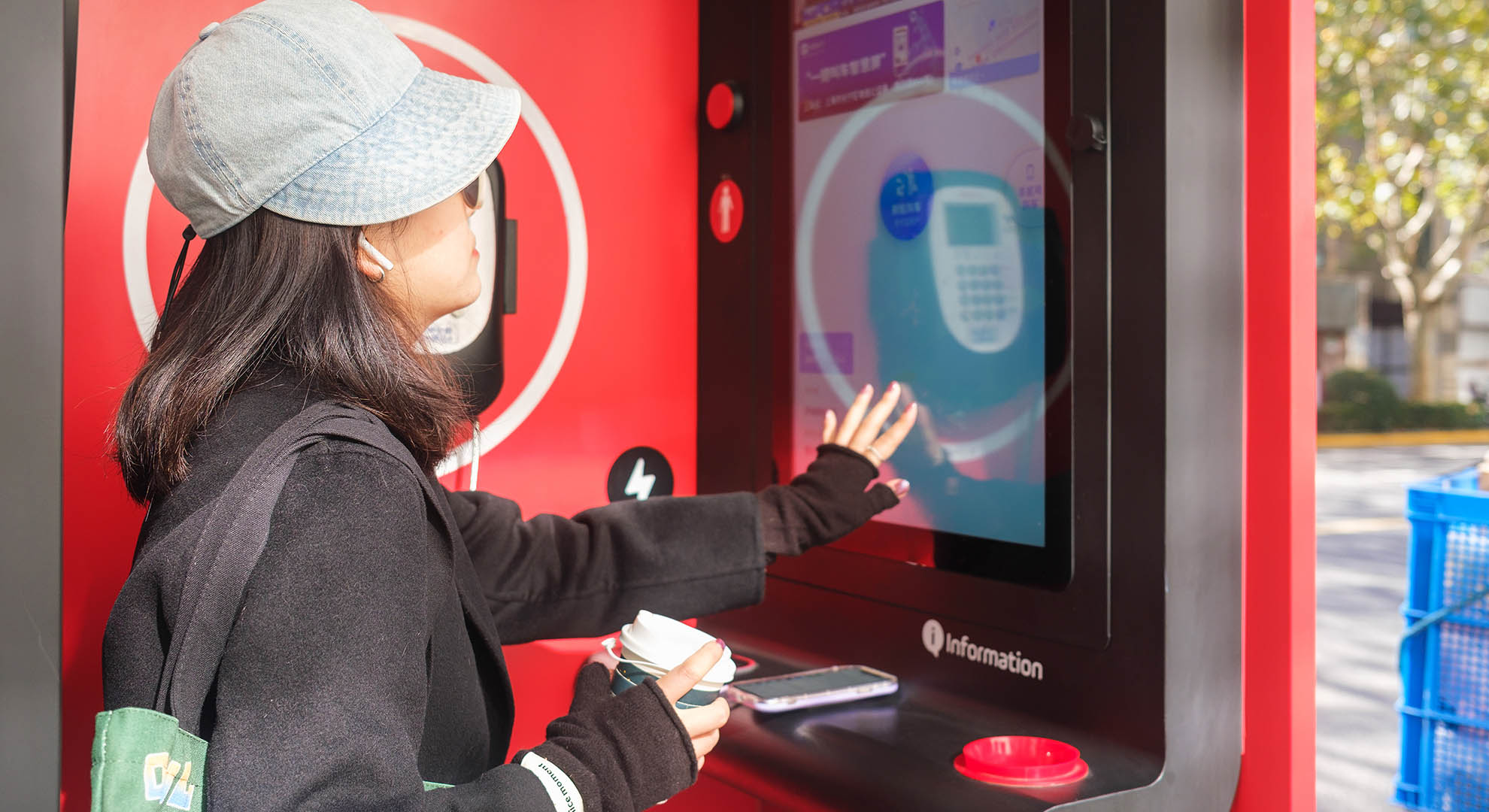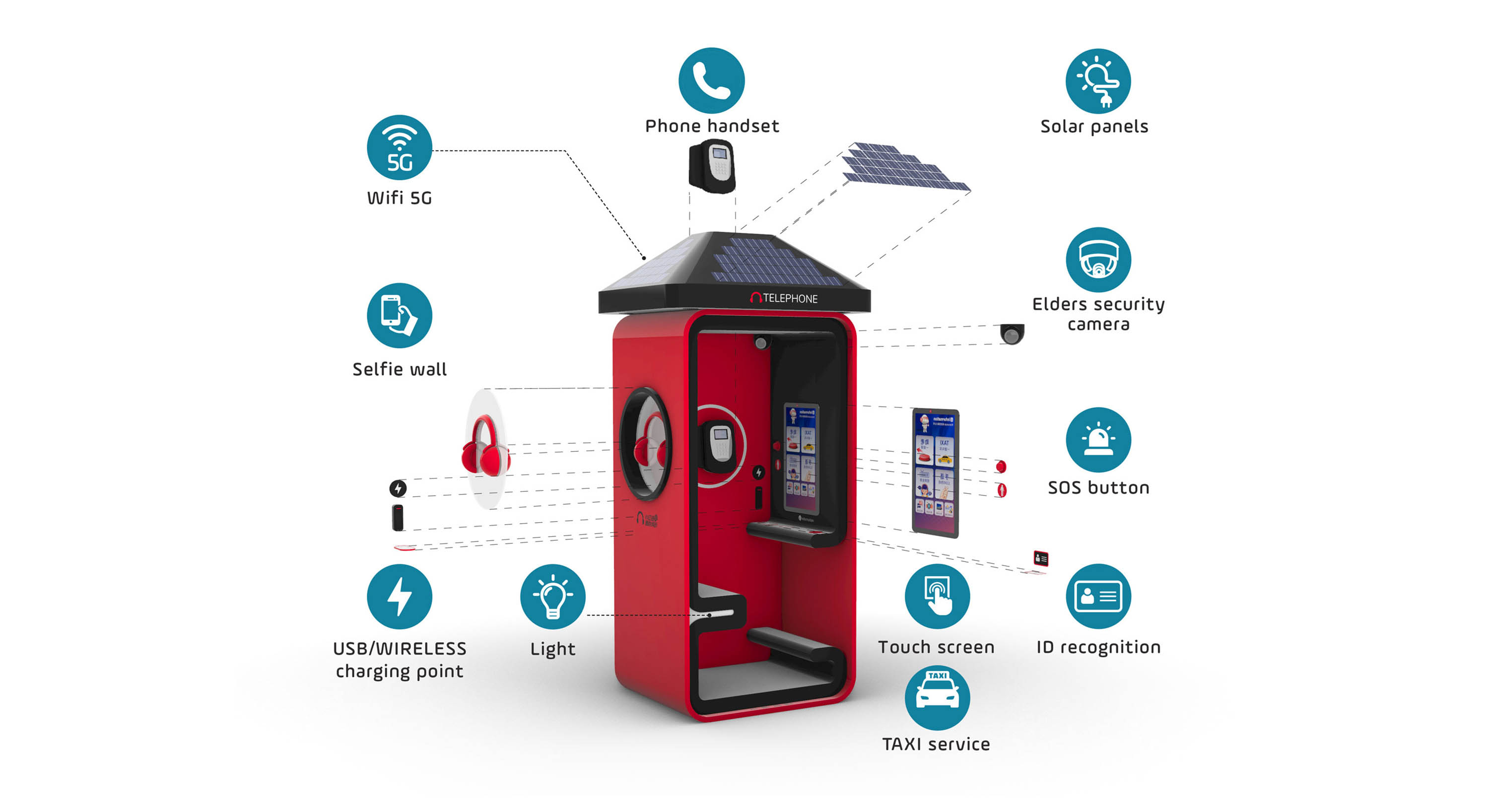Designing for New Urban Experiences
Digital technology transforms the phone booth
This article is from the archive of Roca Gallery. It was first published in March, 2023.
By now we must all be aware that we are living in the Fourth Industrial Revolution, which is dominated by artificial intelligence, brain science and chip technology. This evolution of human society is happening in front of us right now, whether we are conscious of it or not, and the digital technology that powers it has become a constant part of our daily lives. From the moment we wake up to the moment we go to bed, we interact with digital devices and technology in countless ways.
It has also become a critical part of business life. From communication and collaboration tools to digital marketing, businesses of all sizes rely on technology to operate and grow. The COVID-19 pandemic accelerated the penetration and adoption of digital technology in many areas of our lives. From remote work and online schooling to virtual social interactions and e-commerce, the pandemic has highlighted the importance of digital technology in keeping us connected and productive.

A new generation of phone booths in Shanghai powered by digital technology, 100architects, 2022. Photo © Rex Zou
This emerging digital world has drastically altered the way we interact not only with our peers but also with the spaces around us. Since we can find the answer to nearly any question with just a quick search online and—by using AR (augmented reality) and VR (virtual reality) in most cases—we can do nearly everything else online, today’s citizens expect a similar easy-to-use and hyper-stimulating experience when they’re physically in the public realm. As technology advances, design in all its forms of expression has had to adapt to new digital experiences. This is especially relevant in large urban areas, where information technology and big data not only reveal the essence of a city, but also shape its future development, allowing for the transition into smart cities where advanced technology is being used to enhance the quality of life of its citizens.
From automated transportation systems to intelligent street lighting and smart waste management systems, the potential of smart cities is immense. So, if your city isn’t modernizing quick enough and planning ahead, it has already fallen behind. There are cities much more advanced than others in that sense. The world’s top cities, such as New York, Tokyo, Barcelona, London or Seoul, are undoubtedly at the spearhead of digitalization, but there is one city where all this is happening at lightning speed: Shanghai.
Ranked the world’s number-one smart city in 2022 by Juniper Research, and with its goal of becoming a global digital metropolis by 2035, Shanghai just launched the Smart Booth in replacement of the old traditional phone booths—which have become relics on streets throughout the city—demonstrating how digital elements can enhance citizen’s experience in public spaces.
Designed by 100architects for the Shanghai Branch of China Telecom, this innovative project is a prime example of how information technology can be leveraged to enhance urban services and create a more efficient and sustainable city.

The new Smart Booth is equipped with an emergency button, 100architects, 2022. Photo © Rex Zou
The Smart Booth is a unique type of urban artifact powered by solar panels on its roof, and equipped with a variety of new features and technological upgrades that cater to the needs of the progressive tech-savvy population of Shanghai as well as to the safety needs of the elderly who may still remember using phone booths for their original function.
The booth's smart features are what set it apart from traditional phone booths. In addition to a free three-minute phone call, these new, yet traditionally red, digitalized kiosks offer around-the-clock Wi-Fi hotspots, 5G transceivers, wireless charging for mobile devices, along with USB connectivity, touch screens with city maps and easy one-click taxi-hailing services. A panic button along with such artificial intelligence features as face recognition are meant to assist the elderly and tackle the alarming problem of elderly people going missing in China.

The Shanghai Smart Booth’s features. Diagram © 100architects
They are also equipped with sensors that collect data on air quality, temperature, and humidity, providing valuable insights that can be used to optimize urban operations. Additionally, the booths are equipped with cameras that provide live video feeds, enabling officials to monitor public spaces and respond to emergencies in real time.
This integration of functional upgraded digital features and the contemporary look and feel of these urban artifacts is a response to the scale and necessities of Shanghai as a smart city. At the same time the role of the phone booth has been restored as an essential part of the cityscape. Once again it forms part of the collective urban consciousness, and it becomes a place to connect and interact, a place to recharge, slow down and have a cup of coffee, to take shelter from the rain or sizzling heat, and most importantly, a place to create a link that connects phone booths with the past, present and future of this city's history.
Main image: A new Shanghai Smart Booth on a hectic street, 100architects, 2022. Photo © Rex Zou
